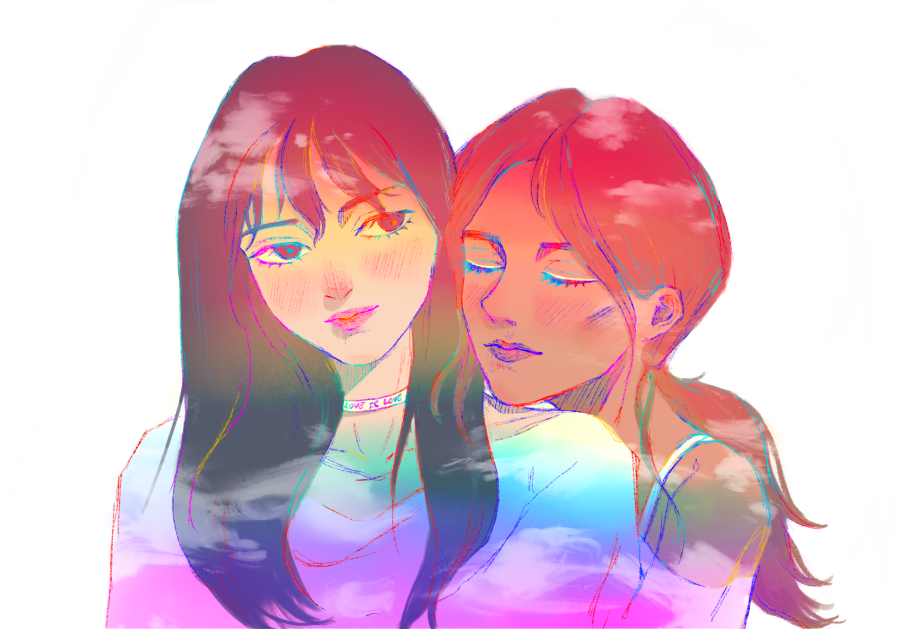With Valentine’s Day around the corner, everything from live television broadcasts to radio stations have been filled with gift advertisements, date ideas, and other propaganda geared toward getting people to buy for the day of celebration. Year after year, one aspect of this marketing that sticks out like a sore thumb is the utter lack of LGBTQ+ representation. Heteronormative marketing has flooded the media for years, whether it be jewlery advertisements urging men to treat the special woman in their lives or color coded his and hers cards in convenience stores. This predominately heterosexual representation of love has resulted from the heteronormativity that is deeply ingrained within soceity, and feeds the prevailing stigma against LGBTQ couples in more conservative areas. In doing so, these commercial companies are sending the message that only straight couples should be accepted.
LGBTQ+ representation in the media is already scarce, and in turn, those who identify as LGBTQ+ are often misunderstood by the general public. The Gay and Lesbian Alliance Against Defamation conducted a “Where We are on TV” study which found that between 2018 and 2019 only 8.8 percent of regular characters on primetime broadcast TV identified as part of the LGBTQ community. Considering that there are about nine million people in the U.S. that identify as LGBTQ, according to a study conducted by UCLA, this is far from great. Additionally, GLAAD’S “Studio Responsibility Index” found that only 45 characters from last year’s mainstream film releases identified as LGBTQ+. Furthermore, this representation often improperly represents LGBTQ+ members of society. LGBTQ+ characters are often plagued by tropes, such as coming out, and met with abrupt deaths that undermine the impact of including queer characters to begin with.
Advertisements are menial, everyday things, so ensuring adequate representation during Valentine’s Day would be impactful in normalizing queer relationships on a large scale. If more Valentine’s Day advertisements featured LGBTQ+ couples, the exposure that the advertisements would get in addition to support from companies who created them would help ensure an authentic normalization of queer love. Large companies need to understand their role in this normalization and step up to the plate; better representation is not difficult, companies just have to be willing to stand up for equal representation.
Providing queer youth with the media represention that straight people have the privillege of growing up with is key. Representation matters because it affirms people in their identity and fosters social consciousness and understanding of a constantly progressing world according to Jennifer O’Brien, a clinical psychologist at MIT Medical. During a holiday celebrating love, this is even more important. According to Dr. O’Brien, teenagers are more susceptible than adults to influence, as they are still trying to understand who they are. Media representation provides them the space and resources to do so. LGBTQ+ youth not only learn more about their identities through characters they see themselves reflected in but may also gain confidence through them, according to Dr. O’Brien.
As Amber Leventry, a transgender LGBTQ+ activist, from The Washington Post put it, “for queer youth to feel normal, they need to see, read and hear the voices of others who look like them and use the same identifying labels.” Just as reassurance tends to make people feel more confident about things such as an outfit or idea, the validation that LGBTQ+ youth would get from seeing themselves portrayed in Valentine’s Day advertisements will provide them with more confidence and comfort in their identities.
Additionally, increased representation in Valentine’s Day advertisements would normalize LGBTQ+ relationships for those who may otherwise discriminate against LGBTQ+ youth. Being exposed to a diverse array of relationships through the media, especially through smaller things like Valentine’s Day advertisements, would help to educate those who look down on those who identify as LGBTQ+.
Consequently, larger companies should make more of an effort when constructing new campaigns for the season. Constructing LGBTQ+ friendly campaigns is not a difficult task; GLAAD, for example, has even published a media resource kit to coach companies on LGBTQ+ inclusive Valentine’s Day coverage, even offering storylines for the campaigns. Now companies just need to care enough to take action and integrate these resources into their advertisements.
Hesitation to create advertisements with LGBTQ+ couples is understandable to an extent, as it may jeopardize the number of customers, and in turn, profits that a company earns. Last December, after airing an advertisement featuring a same-sex couple kissing, The Hallmark Channel faced backlash from conservative customers, leading them to momentarily remove LGBTQ advertisements from the channel. However, companies should abide by their own set of morals apart from their customers.
The wellbeing of LGBTQ+ youth could be improved by these companies, if they made their Valentine’s Day advertisements more LGBTQ inclusive. These representations of healthy LGBTQ relationships would work toward normalizing those relationships. There has definitely been progress in terms of representation during the past few years, with companies such as Lush including LGBTQ+ couples in their Valentine’s Day advertisements. Yet, according to a report conducted by Adobe in 2019, 58 percent of LGBTQ people identifying people report no longer supporting a brand or company due to lack of representation in advertising. Although some companies have evolved with the times, many, like the Hallmark channel, fail to recognize the implications of the morality behind their advertising decisions.
So as the season of love and romantic gestures rolls in, companies must ensure the occasion remains as inclusive as possible through their advertisements. The current failure of advertisers to show equal representation is unacceptable. Future campaigns must utilize their platform to normalize LGBTQ+ relationships and send a message of support to queer youth.
Art by Angela Liang from the UCSD Guardian Art Department.















Taylor • Feb 10, 2020 at 8:10 am
I think in the beginning of the 6th paragraph, you meant normalizing homosexual instead of heterosexual (but I could be wrong/reading it wrong too!)
Guardian Staff • Feb 10, 2020 at 12:06 pm
Updated! Thank you for the catch!